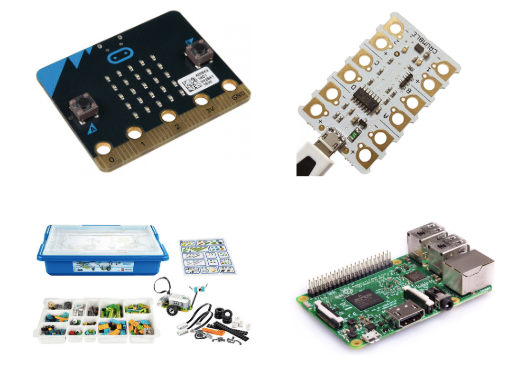What physical computing devices are teachers using at Key Stage 2?
02 May 2019

Physical computing is an educational context for teaching computer science by using hardware and software to create tangible constructs. Using simple inputs, physical computing takes data from the physical world and manipulates it digitally to create outputs.
For example, this could be programming a robot to detect a line on the floor and follow it, or programming an interactive piece of art to spring to life whenever it detects a certain level of ambient noise. The tangible nature of physical computing makes it an engaging and enjoyable activity for teaching computing to children.
As part of her MSc Computing in Education dissertation, Katharine investigated the use of physical computing at Key Stage 2 in England with a small group of teachers (n = 54) who use online communities to support their classroom practices. She found that more than half (57%) were planning to use physical computing activities in their lessons in2018/2019. A further 25% would have liked to include such activities in their planning, but did not have access to suitable equipment.
A range of different commercial devices is available to use with Key Stage 2 learners:
- Programmable robot toys – these devices are relatively easy to set up, they encourage playful learning, and they are often well-supported by lesson plans to deliver curriculum goals. However, they are unsuitable for real-world applications.
- Construction kits – these offer the opportunity to build and create, and their detailed instructions provide troubleshooting support in the classroom. But because the children build to pre-determined plans, the finite nature of kits can limit the creative aspects of computing.
- Circuit boards, microcontrollers, and microprocessor boards – these can simulate an open-ended variety of real-world scenarios, and they are relatively inexpensive. Compared to kits and programmable toys, such devices are usually the most time-consuming to set up and support.
The teachers surveyed for the research were planning to use a variety of devices in their lessons. The two most prevalent were the micro:bit (35%) and the Crumble (31%); it seems that teachers are opting for the most versatile products that are affordable enough to allow a low learner:device ratio in the classroom.
It was surprising to see that 43% of teachers in the sample group taught all four year groups in Key Stage 2. The next steps in this research will be to find out more about these teachers, and whether teaching multiple cohorts of learners in a primary setting has an impact on the planning and delivery of physical computing activities.
Since this research was conducted, Scratch 3 has been launched. This new version of the block-based programming language includes lots of extensions to connect Scratch to the physical world, and it will be interesting to see whether this affects the decisions made by teachers about which devices best suit their learners.

About the author
Katharine Childs is a Programme Coordinator at Raspberry Pi Foundation.